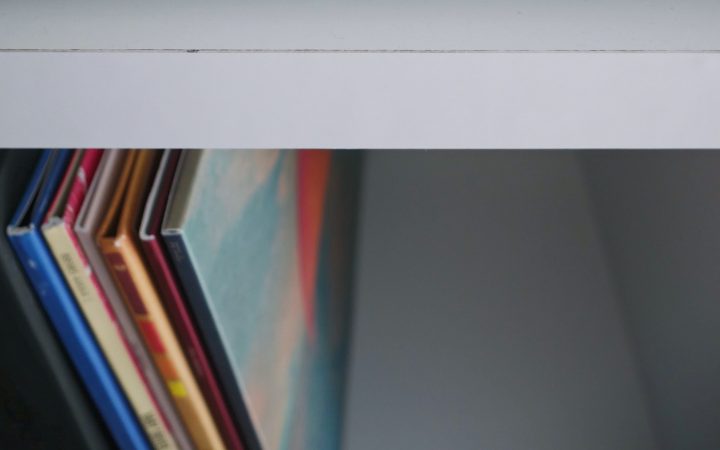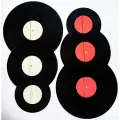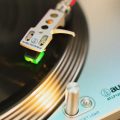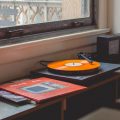Are you looking to branch out and start collecting 45s? Are you worried that you won’t be able to play them on your own vessel? Can you play 45s on a regular record player?
All this and more today as we explore some of the most common record sizes and speeds so you don’t have to!

Table of Contents
- Types of Vinyl Records
- Record Speeds
- Playing 45s on a Modern Turntable
- Final Tones
- FAQs Can You Play 45s on a Regular Record Player
Types of Vinyl Records
There is not one single type of vinyl record, just as there isn’t one singular type of format or type of release. Below we will be listing four of the most common types of releases:
Single
The most common vinyl record types to be played at 45rpm are singles, usually containing 2-4 songs on a 7-inch record. Such a format was typically used as a way to advertise an artist ahead of a tour, ensuring that as many could sample their sound as possible so that as many people as possible would buy tickets.
Despite how disposable this format can be, it is 45 rpm records that boast the best sound quality. In fact, it was Emile Berliner (inventor of the gramophone) who discovered in the history of how records were made that the faster a record plays, the better the overall sound quality.
Extended Play (EP)
An extended play is a type of release that occupies a middle ground between a full album and a single, the former containing upwards of five songs and the latter usually containing two. In this way, an EP can be a great way for a band or artist to experiment with new artistic ideas without overly dedicating themselves to a full-length release.
Long Play (LP)
On the complete other end of the spectrum, we have Long Play records which are essentially just albums with fancy titles. With the advent of these records came bigger and bolder experiments, both by companies looking to fit longer-form classical pieces onto vinyl and artists looking to expand the limits of consciousness through a turntable or record player.
At the time not all record players could hack the size of this new innovation, though nowadays it is likely the most commonly distributed vinyl format.
12″ Singles
So, while most albums can be found on 12″ vinyl record sizes, there came a new format with the advent of dance and electronic music that sought to change things up a bit.
The first to do this was a band called Double Exposure, living it up at the height of disco with songs that sounded as lavish and decadent as the lyrics implied.
This decadence was readily available in the extra-long playing times which allowed DJs to keep mixing for longer while also allowing them to do so at the higher fidelity offered by 45rpm playback. This would be especially necessary as sound systems got larger alongside the size of the audiences.
Record Speeds
Here it would be worth noting the differences between the three main turntable speeds at which record players play:
33 1/3 RPM
Records played at this speed were introduced as the successors to the older 78 rpm format, the latter being synonymous with old shellac records from the earlier era of audiophilia. These newer records were introduced along with the 12″ record, a Columbia Record innovation that sought to revolutionize how much space a record could offer the music in question. This has the lowest fidelity of all the speeds.
45 RPM
This speed is far more synonymous with 7-inch singles, though, as we have seen above, there are plenty of variations therein. This can include the record size of 12″, though equally there are also 10″ records used for similar purposes as those detailed above.
It just goes to show that because a record spins the same way, they are doing more or less the same thing. Whether or not a record plays at 45 rpm or otherwise will determine how much music can fit onto the record and the overall fidelity of the final product.
78 RPM
This is the oldest of the three speeds here arrayed, formulated at the advent of recording technology by Emile Berliner as being the optimum speed at which to play records on a gramophone. The optimum speed was actually determined to be anywhere between 70 and 80 rpm, though Berliner chose 78 for convenience’s sake.
Still, this speed lasted for a considerable time and still exhibits a significant legacy. Sure, most records today are usually pressed to the previous two speeds, but there are still some exceptions and plenty of modern turntables still cater to this speed.
Playing 45s on a Modern Turntable
Thankfully, as we have already discussed, most if not all modern turntables will cater to this speed without a hitch. The real problem is trying to get them to fit onto the spindle of a modern turntable.
A lot of old 7-inch singles operate under the assumption that you will already own the little tool that ensures the record fits on the spindle, something that more modern 7-inch records don’t so readily assume.
These adapters can be as fancy (above) or as normal (below) as you like.
Final Tones
So, there you have it! Hopefully, you can approach 45s with ease knowing that they can be played on any record player.
FAQs Can You Play 45s on a Regular Record Player
Can you play 45s on a normal record player?
Indeed you can. Being one of the two most common record sizes and formats in the world, you can easily play 45s on a normal record player.
How do you play at 45 RPM on a record player?
If your record player is capable of playing at this speed, then it should be able to do so at the push of a button.
Can you play singles on a regular record player?
Yes, you can. These are, after all, one of the most common audio formats in the world.
Can you play new records on an old record player?
Vinyl record technology has changed very little in the past 50-100 years, so you can be sure that your new records will sound normal through an old record player.







